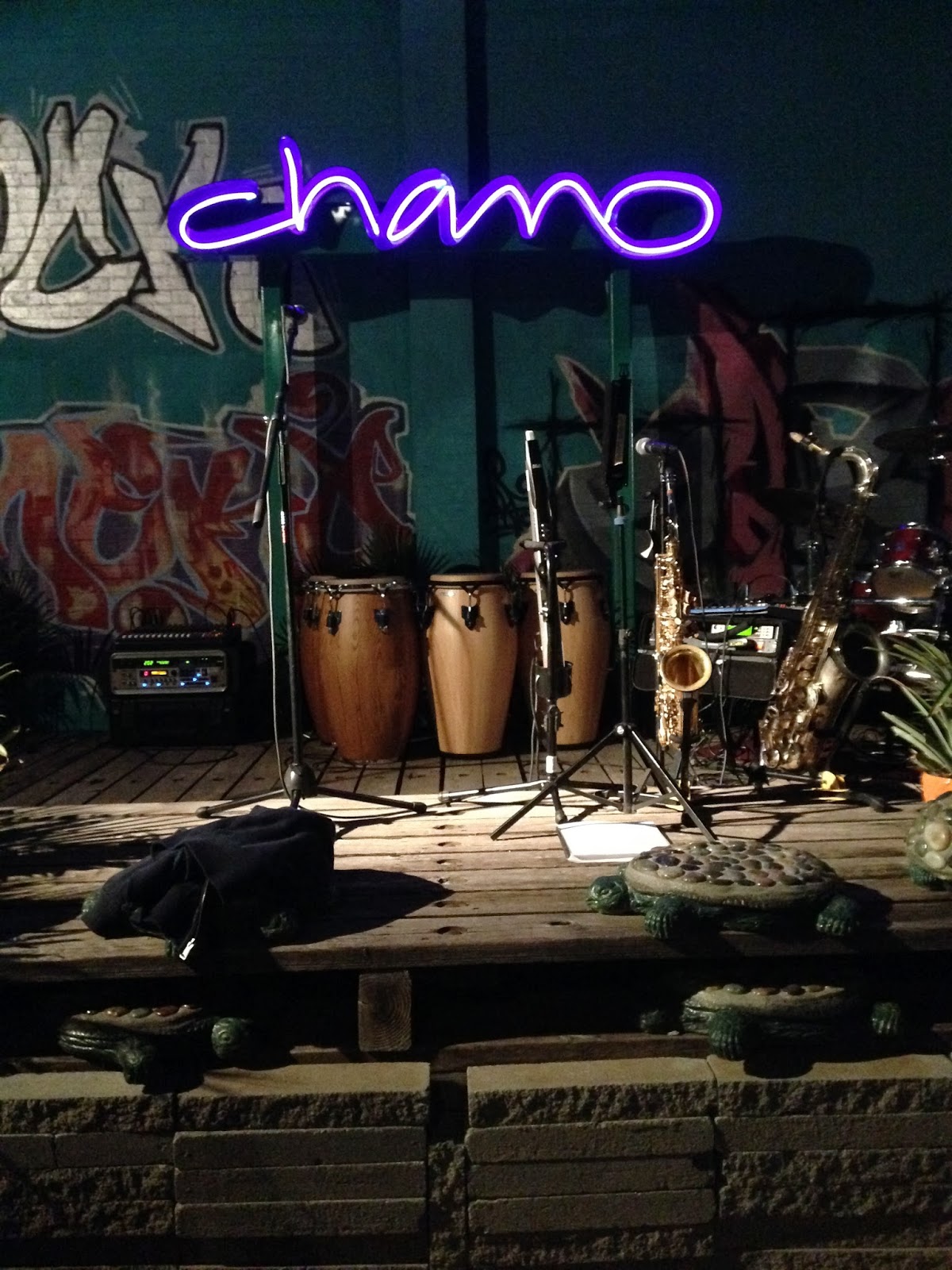 There’s a new eatery in town, so-named after its owner and
head cook, Chano. Thus, Chano’s, as it is called, is aptly
named. After all, this place is
different. The first thing a
visitor notices is that the venue is completely outdoors; there’s no indoor
seating. Chano, too, cooks outside
and is viewable by patrons through a wire mesh screen. The natural setting, located in an
older part of Laredo, works very well to create the mood that Chano’s is going for. Birds chirping, soulful music played at
an enjoyable volume from the speakers, and happy customers augment the positive
vibes. To add to the ambiance, the
artwork on the walls—murals and abstract paintings and pictures created by
local artists—line the giant wall behind the stage where local bands perform
with delicate purpose. At the top
of the wall, the word “Freedom” repeats itself along the course of the
perimeter of the wall. An
appropriate word that suits quite well the theme that Chano’s creates.
There’s a new eatery in town, so-named after its owner and
head cook, Chano. Thus, Chano’s, as it is called, is aptly
named. After all, this place is
different. The first thing a
visitor notices is that the venue is completely outdoors; there’s no indoor
seating. Chano, too, cooks outside
and is viewable by patrons through a wire mesh screen. The natural setting, located in an
older part of Laredo, works very well to create the mood that Chano’s is going for. Birds chirping, soulful music played at
an enjoyable volume from the speakers, and happy customers augment the positive
vibes. To add to the ambiance, the
artwork on the walls—murals and abstract paintings and pictures created by
local artists—line the giant wall behind the stage where local bands perform
with delicate purpose. At the top
of the wall, the word “Freedom” repeats itself along the course of the
perimeter of the wall. An
appropriate word that suits quite well the theme that Chano’s creates.
Now onto the food…it is outstanding! The finest ingredients and the utmost
care factor into food of the highest quality. Cooked by Chano, himself, his lifetime of dedication to his
craft are evident upon the first bite into any of the entrees. Some seriously great recipes showcase
the seriousness with which the food is prepared. The cuisine is obviously made to irreversibly and positively
impact the lives of patrons. And
so with the tasting complete, one is now officially and forevermore a member of
this intimate society of return customers.
And that’s the point of such a place as Chano’s. It strives
for more—to be better. It seeks to
instill something new into the fabric of the community that helped fashion the
character behind the restaurant.
All the more, it stays true to this vision of uniqueness and expression
that has so often been lost to things corporate and impersonal. While eating at Chano’s, one can’t help but feel a sense of something more and
different that is evolving into a new sense of pride in the community of
Laredo. And that is exactly what
we, the engineers behind this soon-to-be brewery intend for this city and its
community that helped to make us who we are. With the increasing popularity of a restaurant like Chano’s, we have hope that people are
finally ready for something different—something more.
-Marc & Dan





















